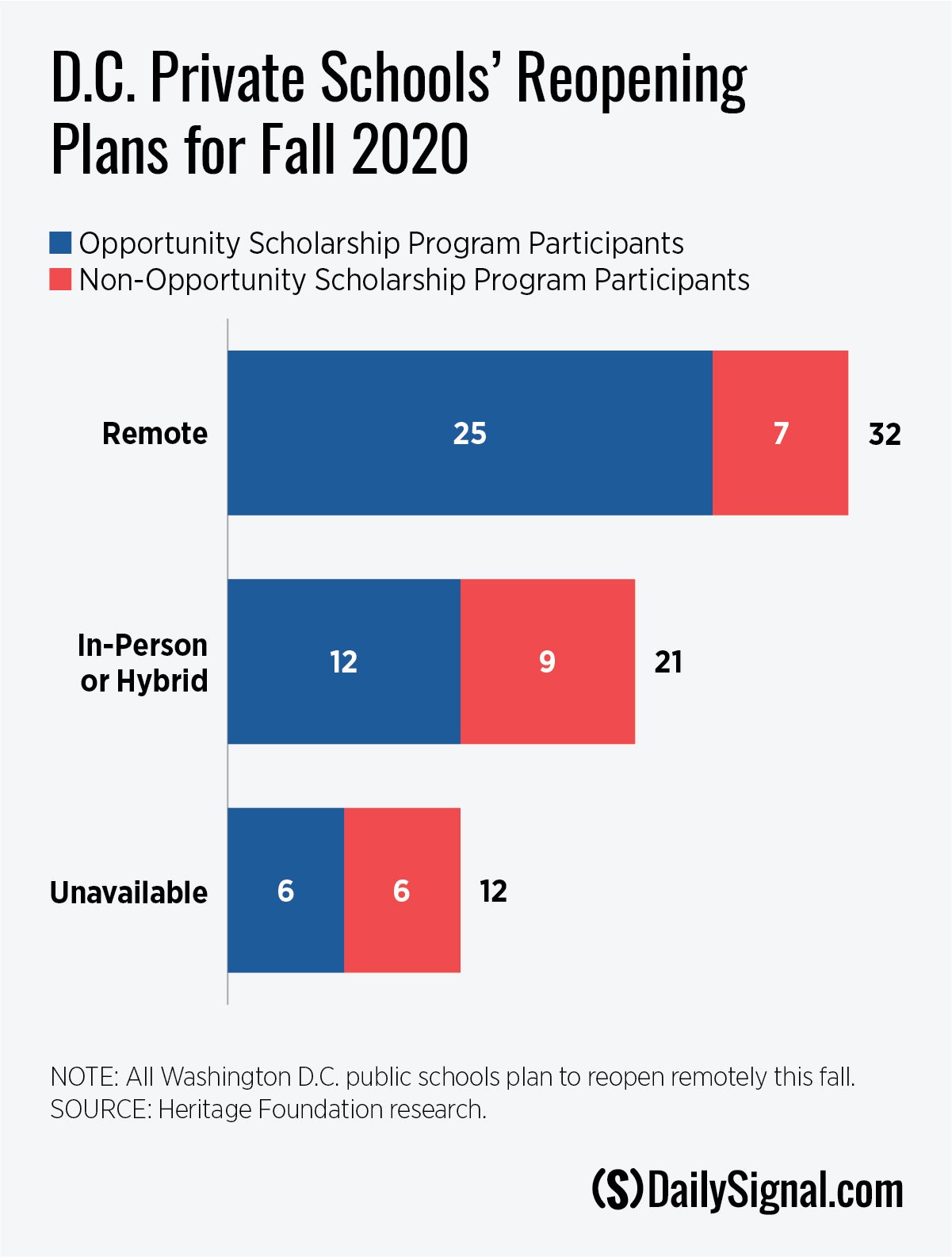For many children living in the District of Columbia, the new school year begins much like the last one ended—at home.
The unexpected onset of the coronavirus pandemic initiated an abrupt transition to crisis online learning.
While some children perform well in their virtual classrooms, not all children respond the same. For instance, although D.C. mom Tiffany Settle’s third-grader excelled using the District of Columbia Public Schools’ remote classroom, her seventh-grade son struggled after transitioning to online learning.
At the same time, it’s unclear how robust the school district’s online learning option will be this fall. This past spring, D.C. Public Schools provided online learning assignments, and teachers offered virtual office hours, but students weren’t marked down for failure to complete work and attendance wasn’t taken.
In July, however, D.C. Mayor Muriel Bowser announced that all 51,000 students (pre-K to 12th grade) attending the city’s public schools would begin the fall 2020 semester virtually.
That’s notwithstanding the fact that 44% of D.C. public school students—about 22,000—lack the technology to access their virtual classrooms, according to a D.C. Public Schools tech survey.
Some D.C. private schools, however, have chosen a different approach, electing to offer in-person learning environments, balancing safety and customized learning.
Through phone calls to schools and searches on school websites, we learned that more than 80% of the District’s 65 private schools provided information about their plans to reopen this fall.

No longer bound by the mandatory closure of nonessential businesses, 21 of the city’s private schools plan to reopen either in-person or provide students with a blend of remote and in-person learning.
Five of these schools have designed programs that allow students to opt into the classroom type (in-person, hybrid, or remote) of their choice. The remaining 32 private schools plan to continue remote instruction this fall.
More than 66% of the city’s private schools currently participate in the D.C. Opportunity Scholarship Program, a private school scholarship available to low-income children.
Opportunity Scholarship Program schools have been slightly quicker to adopt in-person or hybrid learning environments than nonparticipating schools. Four of the 10 private schools offering in-person instruction this fall participate in the D.C. Opportunity Scholarship Program.
At the same time, 7 of the 11 private schools using a hybrid education model also participate in the scholarship program. Opportunity Scholarship Program schools currently make up 57% of the private schools returning to some sort of in-person instruction this fall.
Moreover, Opportunity Scholarship Program schools make up the majority of schools that allow students to opt into their learning environment.
For instance, students at Templeton Academy on Capitol Hill can attend school in a hybrid model with classes online and in the physical classroom. However, students uncomfortable with that arrangement can have all their classes online.
Dissatisfied with the city’s public schools, local families have long favored schools responsive to their needs. The popularity of non-district schools is illustrated by the massive oversubscription to the Opportunity Scholarship Program and to D.C. public charter schools.
The combined waiting list for the Opportunity Scholarship Program and for D.C. charter schools comprises about a quarter of the children attending D.C.’s public schools.
The Opportunity Scholarship Program’s popularity stems from its positive effects on students and is often the only chance for many students from low-income homes to escape unhealthy and ineffective learning environments.
Scholarship holders perform comparably to their public school peers on academic achievement tests at just one-third of the cost. Moreover, Opportunity Scholarship Program participants are estimated to graduate at a rate 21 percentage points higher than their peers who applied, but did not receive, a scholarship.
Other positive effects found among scholarship recipients include elevated perceptions of safety, reduced absenteeism, and higher levels of satisfaction.
Despite its positive results and a massive oversubscription, in which there are an estimated four applicants for every available scholarship, program admittance is limited—only 365 new recipients received scholarships last year.
That means that fewer than 1 in 4 applicants received scholarships.
The current crisis should incentivize policymakers to expand the D.C. Opportunity Scholarship Program so more children can access private school options—improving their access to a school of choice that is actually open to in-person instruction.
Congress is uniquely positioned to expand the program since the District of Columbia is under the jurisdiction of the federal legislative body. In light of the current crisis, Congress should expand access to the private school scholarships by allowing students in closed public schools to automatically qualify for the D.C. Opportunity Scholarship Program, while authorizing an increase in scholarship funding.
Congress could also increase private school participation and expand scholarship opportunities by lowering the regulatory burden on the D.C. Opportunity Scholarship Program.
Even before the pandemic, the Opportunity Scholarship Program needed to be increased in light of popular demand. The current crisis only underscores the need for expansion.
Expanding access to the Opportunity Scholarship Program would mean that more children have access to education options that are a good fit for them and are open to more families.
This piece originally appeared in The Daily Signal



